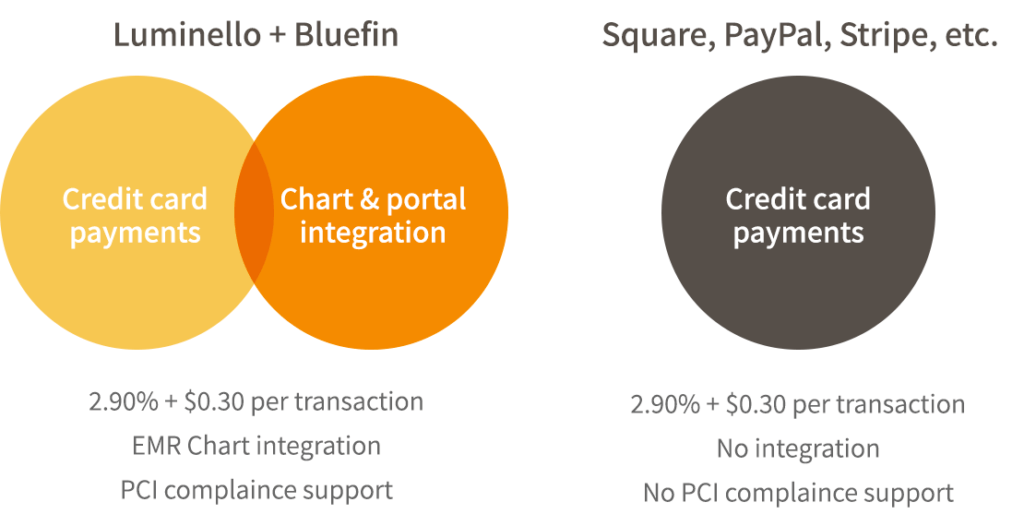“In most businesses, bosses can delegate important tasks to underlings to make the organization run smoothly, but in doctors’ offices, only the doctor can perform the central activity of seeing and diagnosing patients—which makes the hierarchy of a medical practice less like a pyramid and more like a wheel, with the doctor at the center. Why are Doctor’s Offices Run So Badly?” Slate, Anderson, L.V.
One of the things about medical school and psychiatry residency is that neither of them are business school. Another of the things about medical training is that any “transition to practice” advice may be out of date within a year or two. As the for-profit healthcare industry has grown, the role of the physician-entrepreneur has changed dramatically. It continues to change, at times outpacing clinical advances in the practice of medicine.
One way to cope with the constant change and sustain a private practice is to adopt a business mindset as fully as possible (Most of what follows is loosely based on The E Myth Revisited). In having this mindset there are three parts: the first has to do with the purpose of a business and the parameters of that business. The second is the tasks and roles needed to accomplish the purpose of the business within its parameters. The third is accepting responsibility for your enterprise.
Business Purpose
All businesses have the same two purposes: 1. To provide a good or service in exchange for money; 2. To make a profit. Many who go into mental health care may have other goals, such as: to help people, to use one’s talents to the fullest, to be a good employer, to advance knowledge in one’s field, and others. However these are not the purpose of a business. The only essential purposes of a business are the two listed above.
Business Parameters
However the parameters of your business is established through your personal and professional ethics. These are the things which distinguish your business and make it a personal and professional endeavor. Knowing your professional and personal ethics and obligations will help your business be sustainable by ensuring the business works for you, your profession and your community, rather than your business becoming a burden to all involved.
Three Jobs, Not One
Any business enterprise demands three roles be filled, whether by one person or many. The three roles are: entrepreneur, administrator, and technician. The entrepreneur is the creative and money-making spark, who is willing to start a business, invest in the business and is constantly looking for ideas to make the business profitable. Ideally the entrepreneur is willing to see a setback as an opportunity (possibly after a suitable period of frustration and mourning); is open to input from others; and is able to remain focused on a goal.
However the entrepreneur is worthless without the other two roles, the manager and the technician. The manager keeps track of systems and makes sure that every aspect of the business has the resources needed to keep things going. The manager ensures that bills are paid, that invoices go out, that there is a scheduling system and flow, that legal requirements are met, and so on. It is not exciting, but without management nothing could happen.
Finally there is the role of the technician, the person or people who actually make the goods or provide the service that is being sold. The therapist and/or physician is first and foremost, the technician and has spent years and thousands of dollars to get the training to provide mental health care.
The importance of this is that it is not enough to hang out one’s shingle, time needs to be devoted to creative thought about the structure of the business, how large it will be, where it is located, marketing strategies and so forth. This is the entrepreneur. And in a solo practice this is the practitioner. Even if the practice is a group or a partnership, it is vital for the practitioner to have a basic understanding of the practice’s vision and plans for future growth. Why? Because if the practice is in conflict or likely to become in conflict with the practitioner’s professional or personal ethics, remaining in that practice is either miserable or outright impossible. Some examples could be working too many hours to sustain family obligations, no opportunity for pro bono work, or inability to take on side projects such as research.
Likewise the practitioner should have a basic knowledge of how accounting is done for the practice, how the bills are paid, what payment policies are for patients whose accounts are overdue. It is essential to know how an electronic medical record works (not just for documenting treatment and prescribing, but for billing, or troubleshooting). In addition the practitioner needs to be aware that most people are still under the impression that all physicians are wealthy. Due to this everyone will be interested in being hired by you, eager to share their “expertise”. You must know what your expectations for staff are, and understand their roles well enough to supervise them and fire them if necessary.
Responsibility
When you own a business, the buck stops with you. You are the reason there is a business. If the business fails or is not profitable, it is on the business owner (after a reasonable amount of time; a business is not profitable for at least three years after start-up in the majority of cases). Lack of income is not due to employees, patients who won’t or can’t pay, insurance companies, government policies, advisors… it is the owner. Why? Because you are “the boss”. It is up to you to do the research needed, fire the unhelpful employees, manage how payment is collected and when you must refer patients who are unable to pay elsewhere. You decide whether and how to participate in managed care contracts with insurers. You figure out how to adapt the practice to government policies. If you hire others to manage these things, you still need to follow up with them and hire someone else if things are not working. This is the nitty-gritty of business. Mistakes will be made. The real challenge is confronting problems and finding solutions that work and do not themselves create untenable new problems.
Systems: The Path to a Solution
That sour note brings us to what helps keep the whole shebang from becoming hopelessly overwhelming… systems. Systems for your business include a workflow for patients, what happens when a patient calls to make an appointment and so on for a whole imagined course of treatment. Periodically systems need to be changed to adjust to new realities, or because they have become ineffective. If you have no staff, staff meetings are not needed, but if the business grows to include other practitioners, a receptionist and a biller, then staff meetings (hopefully brief) will help to keep the team on the same page and root out potential problems early on so they can be addressed.
Here is a checklist of some typical systems that need to be addressed:
- What systems are in place to ensure compliance with HIPAA (also for licensure compliance, business license, drug control, malpractice, liability (if property is owned by business), certifications?
- Marketing system: how are patients going to find you?
- Accepting new patients: what happens when a patient calls for an appointment? (Include pre-authorization if applicable) Are there any issues, ages, diagnoses you prefer not to treat that might need referral elsewhere? What about payment issues?
- Process when a patient arrives for an appointment… do they check in, who greets them? How is the waiting area situated? Is there privacy of some sort for discussing billing/ medications/ other confidential issues?
- How are after hours calls and emergencies dealt with?
- Discharge of patients: how is routine end of care to be handled? Where are old records stored, how do patients get copies of records? In what situations would you refuse to continue treatment of patients and refer out?
This list is by no means exhaustive, but it underlines that in beginning a practice considerable time needs to be given to thinking through these and other questions. Knowledge of all three business roles is needed in order to answer them effectively. Without a doubt some answers will change in the future, but if you are aware of them, then you can write them down as the basis of policy for your practice. You should review policies periodically, initially every three months or so, and longer term at least once a year to see how they have stood up to the changing reality as well as your practice style.
Hopefully this article has been helpful in you knowing that you are at the center of the wheel in your practice and must keep tabs on the totality of your practice. Time, energy and resources must be allowed to do this, even if some of the actual tasks are delegated to others. Systems need to be openly laid out for keeping track of administrative tasks, and they need to be reviewed periodically for relevance and effectiveness. Good systems allow the tasks of a business to run smoothly and over time, efficiently. They also reduce stress by giving a schedule for when to worry about which issues, and provide guidance for coping with difficult situations without having to rediscover the wheel. When they are reviewed regularly (and as needed) systems provide flexibility. Time also should be put aside for the entrepreneurial role, to evaluate the financial health of the practice, keep up to date with any new developments, and to assess the direction and “success” of the practice in meeting goals. For most practices, this can be done once or twice a year, or when there is financial and other systemic stress. Technologies, such as a good EMR, make maintaining systems much easier.
Taking the time to develop these systems and strategies in the beginning, both before opening a practice and as you are waiting to gain a full roster of patients, will lead to a more balanced and satisfying career.
Resources
- The E-myth Revisited by Michael Gerber
- Your professional organization may have invaluable (and often free, with membership) resources to help learn from the experience of others. For psychiatrists, both the AMA and the APA have on-line resources to help with starting a practice.
- Small business association
- Mentoring programs: There are many of these; some operate for a membership fee. Free mentoring: The Small Business Association has some mentoring programs for free. Micromentor has a free program for individuals.


